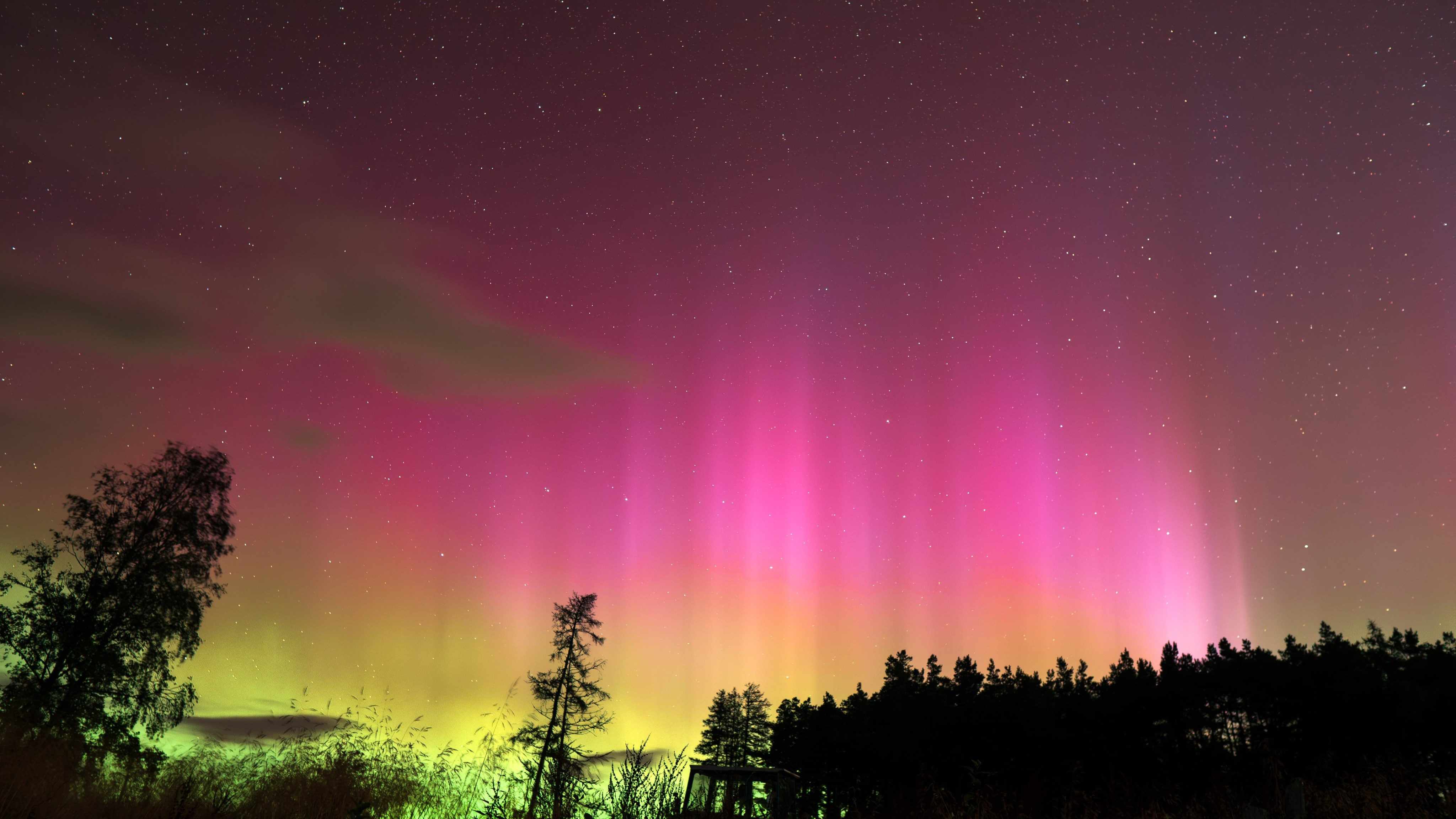
A coronal mass ejection (CME) struck Earth last night. At first, it appeared weak and failed to trigger an immediate magnetic storm. But like they say in the iconic fable "The Hare and the Tortoise," slow and steady really does win the race in this case. The persistent solar wind eventually sparked an aurora substorm and created dazzling northern lights displays down to mid-latitudes.
But how?
"Sometimes slow and steady wins the race! Despite having very low solar winds speeds, sustained -Bz for 8+ hours has allowed for aurora to build and faintly make an appearance down to mid-latitudes," Space weather forecaster and meteorologist Sara Housseal wrote in a post on X.
CMEs are expulsions of plasma and magnetic fields from the sun. They carry electrically charged atoms known as ions. When CMEs collide with Earth's magnetosphere, they can cause geomagnetic storms. During such storms, the ions interact with gases in Earth's atmosphere, emitting energy as light. This light display is called the northern lights, or aurora borealis, in the Northern Hemisphere, and the southern lights, or aurora australis, in the Southern Hemisphere.
Though the CME initially failed to trigger a geomagnetic storm, its persistence and optimum Interplanetary Magnetic Field (IMF) conditions provided the perfect ingredients for an aurora substorm.
Related: Where and when to see the northern lights in 2024
When solar wind meets Earth's magnetosphere, it compresses the magnetosphere on Earth's sun-facing side, creating a magnetopause — the boundary where the solar wind meets Earth's magnetic field, according to the European Space Agency (ESA). This causes most of the incoming particles to flow around Earth, dragging the magnetosphere out into a long tail on the night side of the planet.
When the IMF is orientated southward, it allows for a successful connection of the CME to Earth's magnetic field, effectively funneling solar wind particles into the magnetosphere. This causes the magnetotail to stretch and "pinch" together in what is known as magnetic reconnection. During this reconnection event, energy is released. That accelerates particles back toward Earth, which then triggers an auroral substorm.
During auroral substorms, auroras can spring into life by sudden brightening and rapid movement.
The NASA YouTube video below illustrates this magnetic reconnection event that results in auroral substorms:
Space Weather Physicist Tamitha Skov summarized the substorm process nicely in a post on X. Skov describes it as if the solar storm loads up Earth's magnetic field like pulling back the rubber band of a slingshot. A substorm occurs when the band springs back.
The "persistent CME effects" sparked moderate G2 geomagnetic storm levels at 10:59 p.m. EDT (0259 GMT) according to the National Oceanic and Atmospheric Administration (NOAA) Space Weather Prediction Center.
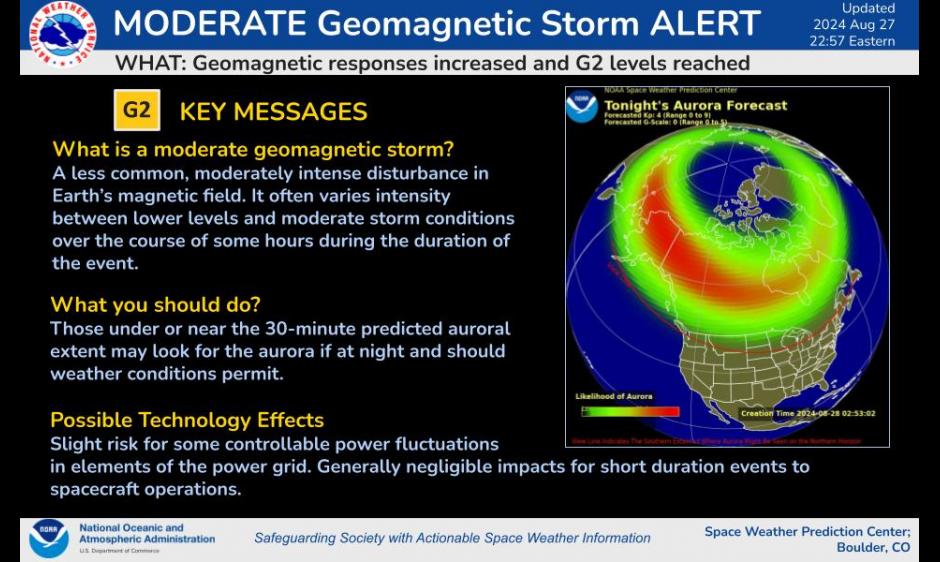
Aurora chasers from around the world had their eyes firmly fixed on the skies and were rewarded with some dynamic and colorful displays.
Self-confessed aurora huntress Monika Focht captured these stunning images between 12:30 p.m. and 2:30 a.m. local time (BST) from her garden in Sutherland, Scotland.
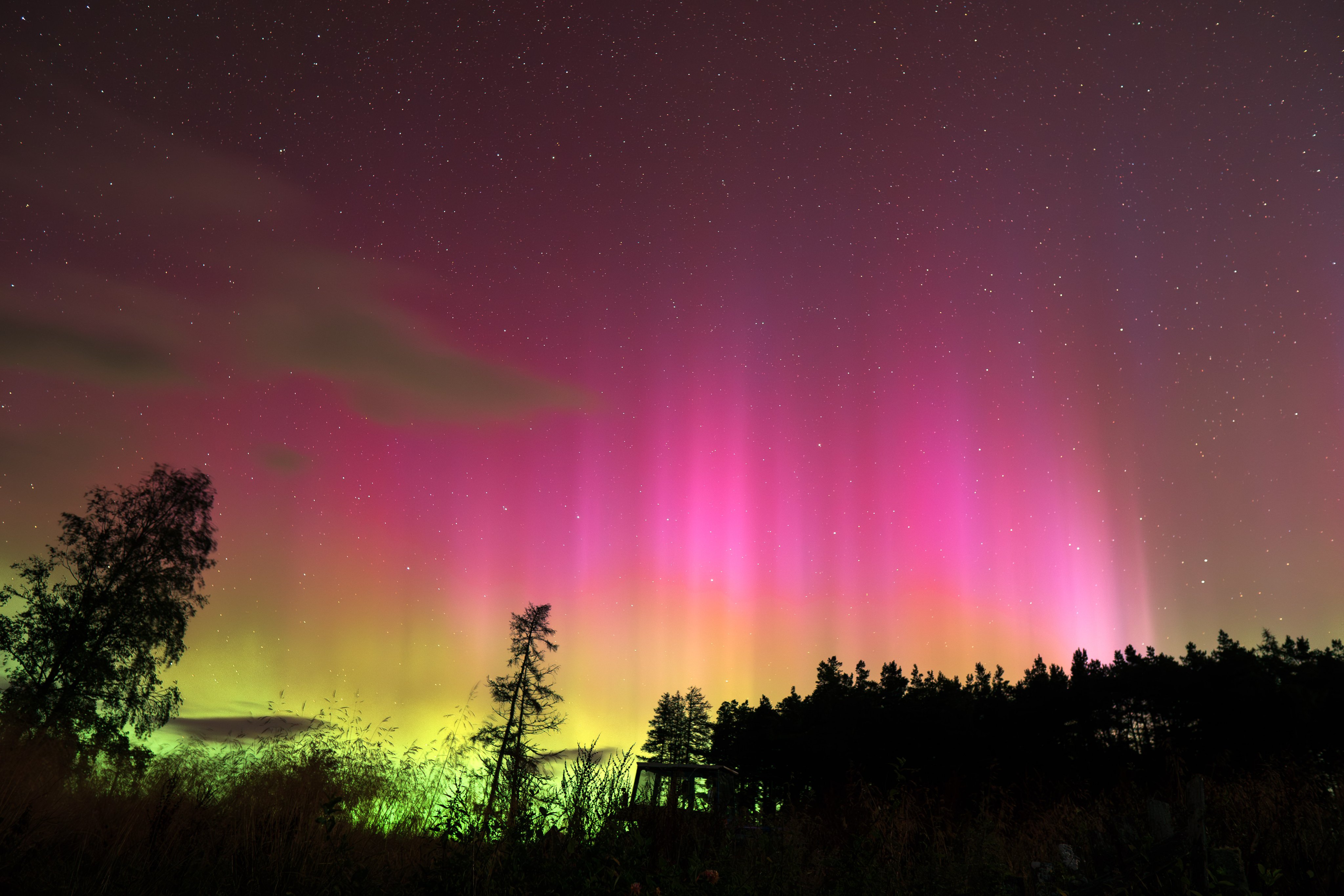
"I was outside in my garden many many times, watching the statistics and using aurora apps," Focht told Space.com in an email.
Focht's perseverance paid off when a vibrant northern lights display began to dance overhead.
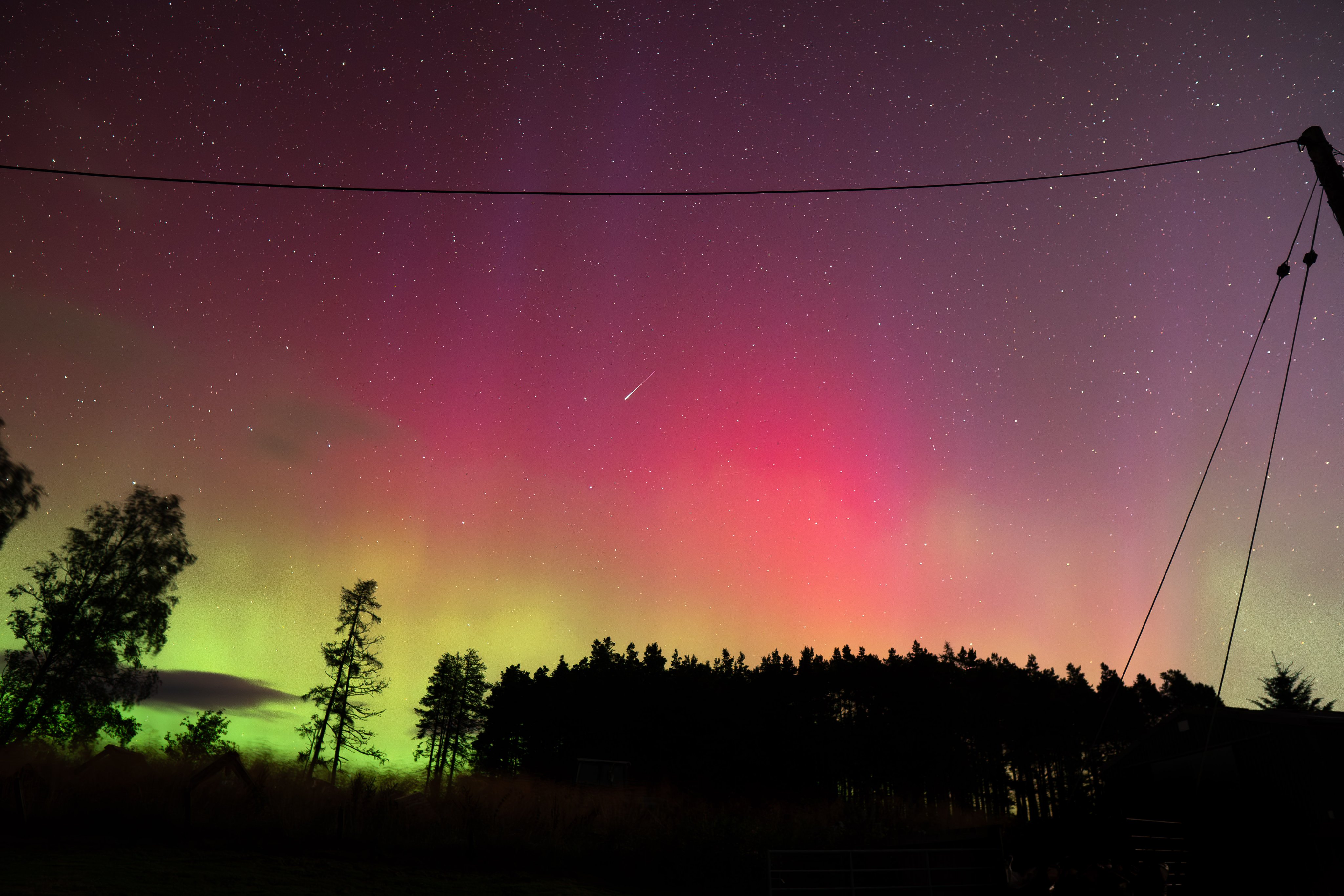
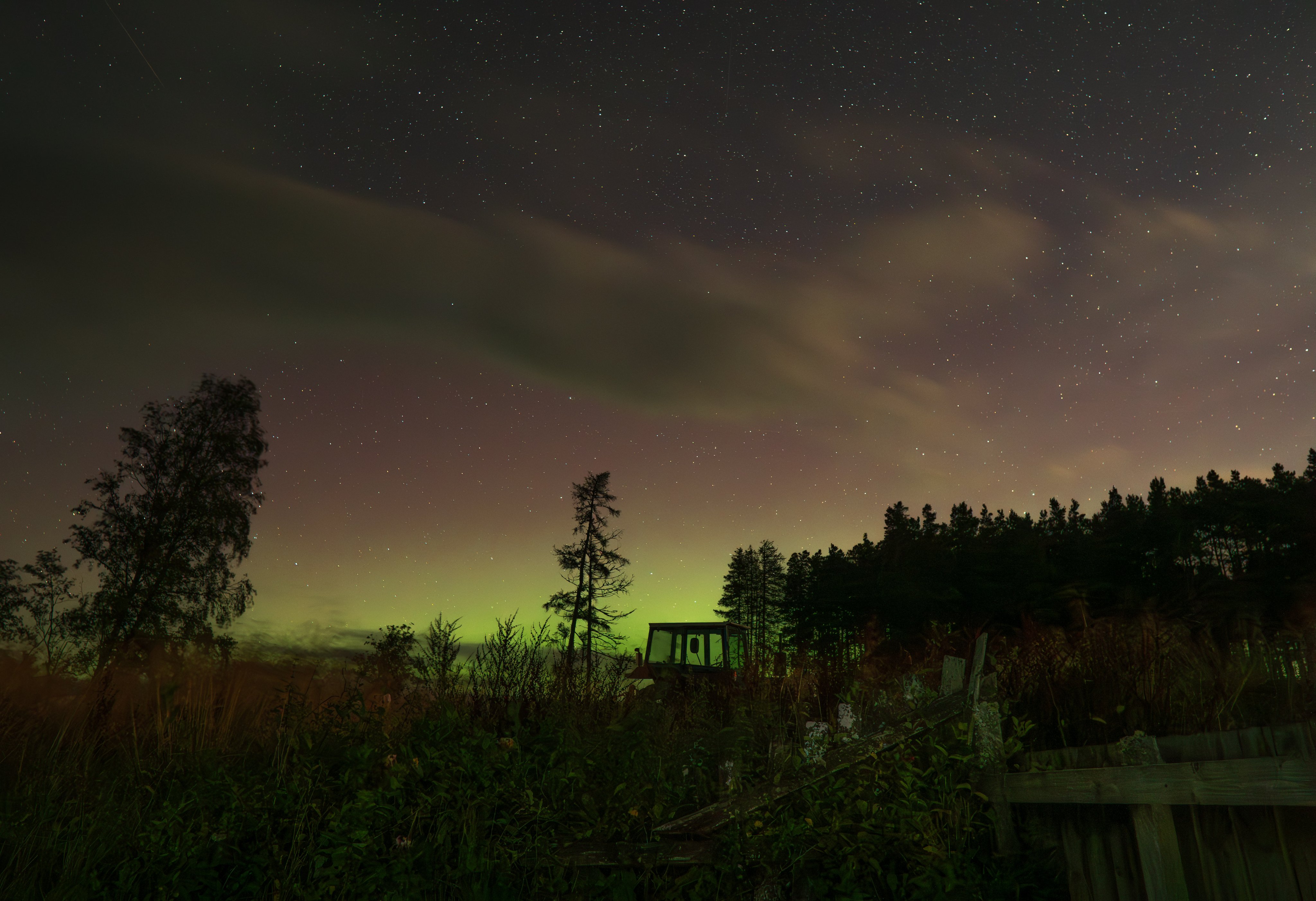
"The colors of the aurora are so special and magical, I create a lot of art all around the aurora as well," Focht continued.
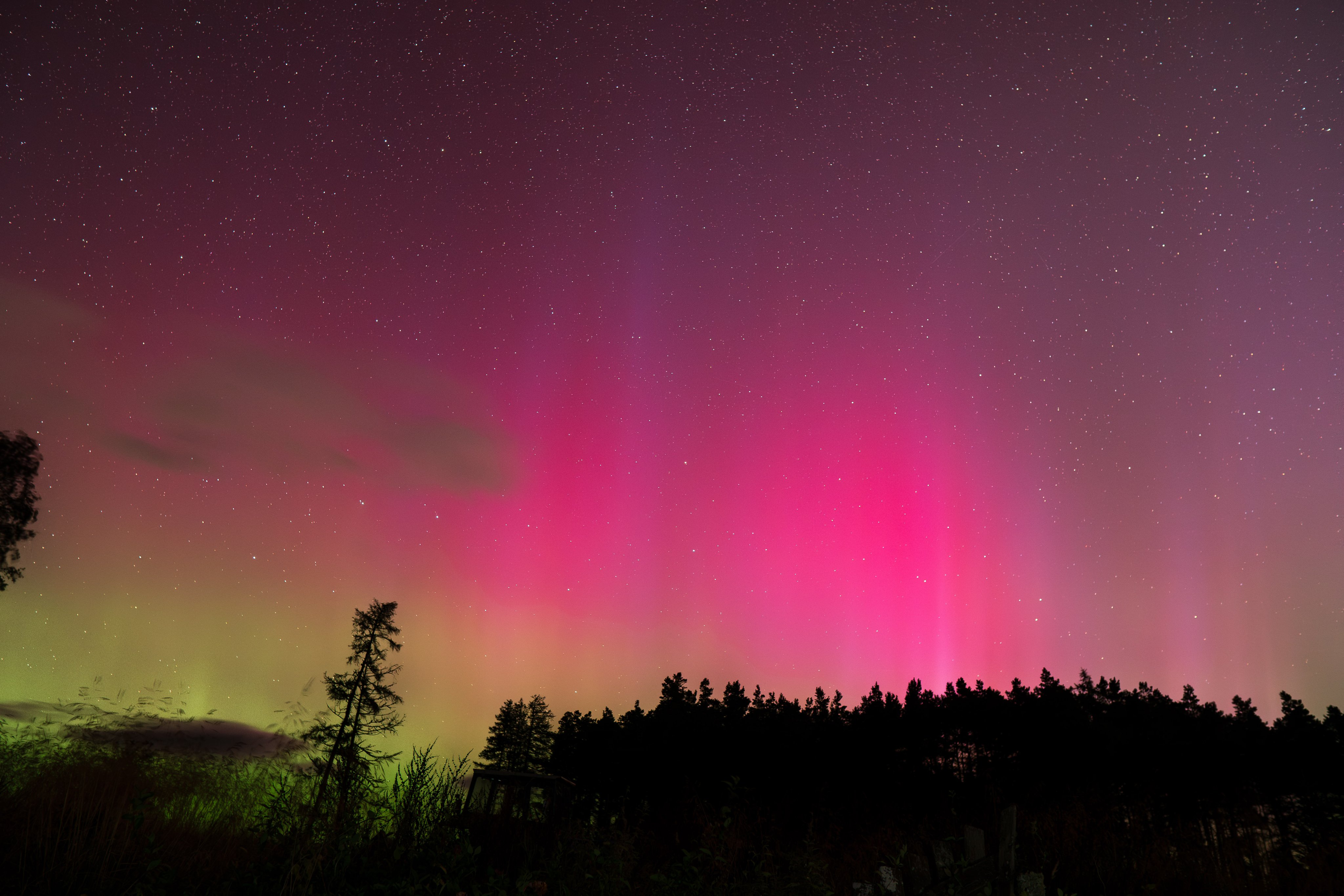
Lisa Pattenden also captured the impressive auroras dancing above Scotland.
"Taken an hour ago, #aurora in #Scotland. Bright moon made it a bit difficult but there she is," Pattenden wrote in a post on X.
Taken an hour ago, #aurora in #Scotland. Bright moon made it a bit difficult but there she is. @chunder10 @TamithaSkov @aurora_chasers @BBCScotWeather @bbcweather pic.twitter.com/vr5aPyQjCnAugust 27, 2024
The northern lights even made an appearance above Jungfrau, Switzerland during the early hours; Jure Atanackov captured the scene unfolding.
"Beautiful purple pillars 10-15° high in the north sky as seen from Jungfrau, Switzerland (46.5°N) this morning at 1:20 UTC. Further diffuse glow seen at 3:00 UTC," Atanackov wrote in a post on X.
#Aurora: beautiful purple pillars 10-15° high in the north sky as seen from Jungfrau, Switzerland (46.5°N) this morning at 1:20 UTC. Further diffuse glow seen at 3:00 UTC. @TamithaSkov pic.twitter.com/hv7lX6W1xrAugust 28, 2024
In Canada, aurora chaser Justin Anderson snapped this impressive image of vibrant auroras dancing overhead in Manitoba, Canada.
"BOOM! Aurora exploded overhead tonight in Manitoba! It’s always fun when it dances through the Milky Way!" Anderson wrote in a post on X.
BOOM! Aurora exploded overhead tonight in Manitoba! It’s always fun when it dances through the Milky Way! 📍 Forrest, Manitoba@Vincent_Ledvina @TamithaSkov @TweetAurora pic.twitter.com/p7as6SuiYZAugust 28, 2024
Meanwhile, STEVE also made an appearance.
STEVE — Strong Thermal Emission Velocity Enhancement — is an aurora-like glow that often accompanies the northern lights, yet is a distinct phenomenon, according to the American Geophysical Union.
Benjamin Jurkovich captured STEVE above Lake Stevens, Washington, U.S.
"STEVE! This is the longest lasting one I’ve ever seen. Captured in Lake Stevens, Washington," Jurkovich wrote in a post on X.
STEVE! This is the longest lasting one I’ve ever seen. Captured in Lake Stevens, Washington. #northenlights #aurora @TamithaSkov pic.twitter.com/yP5uM59cUgAugust 28, 2024







